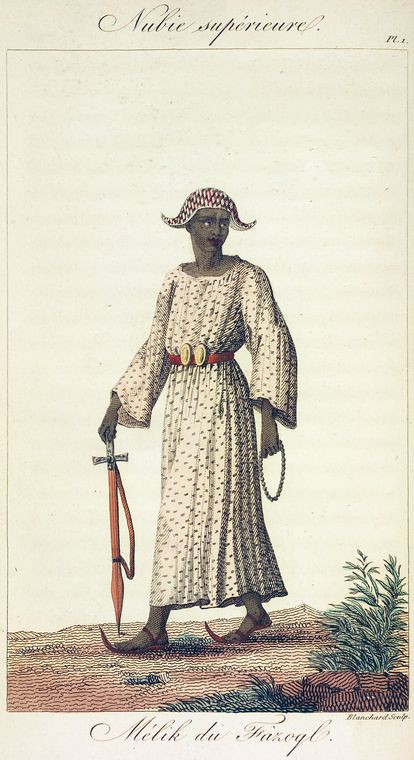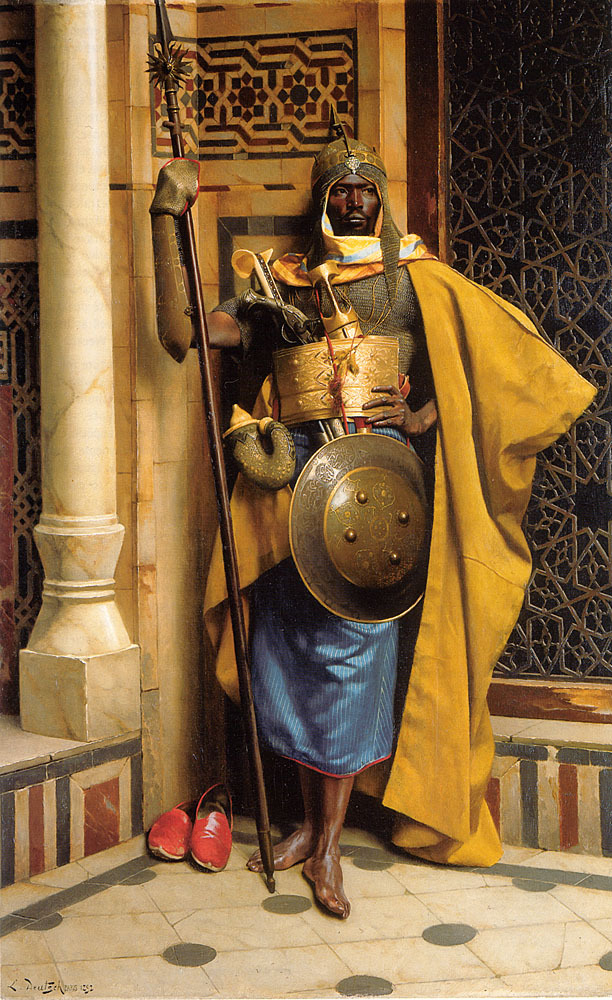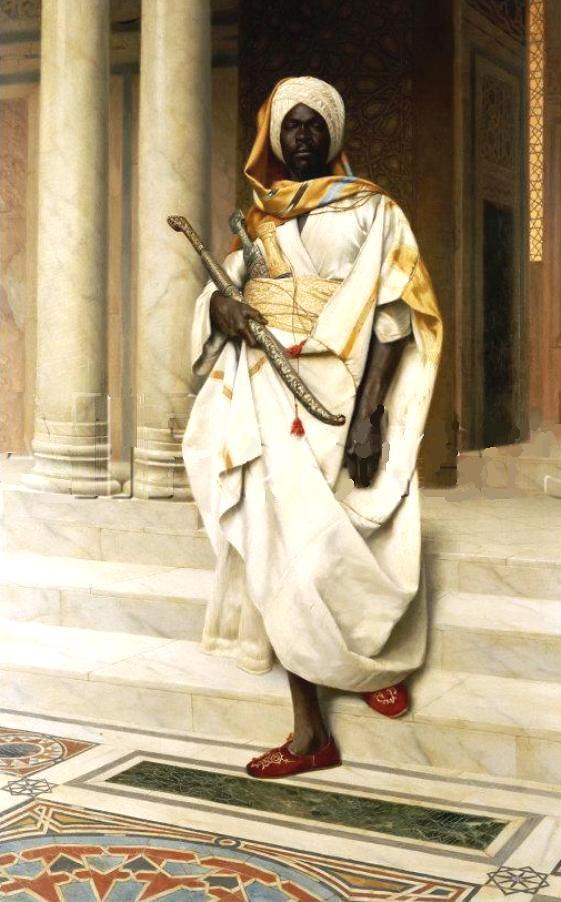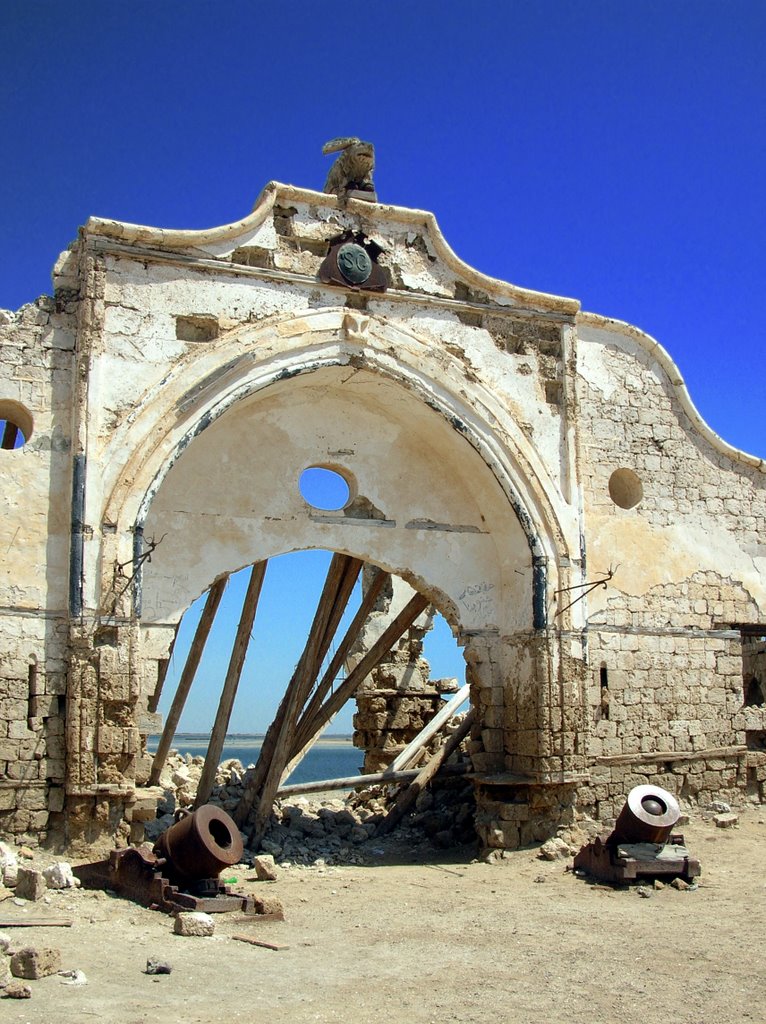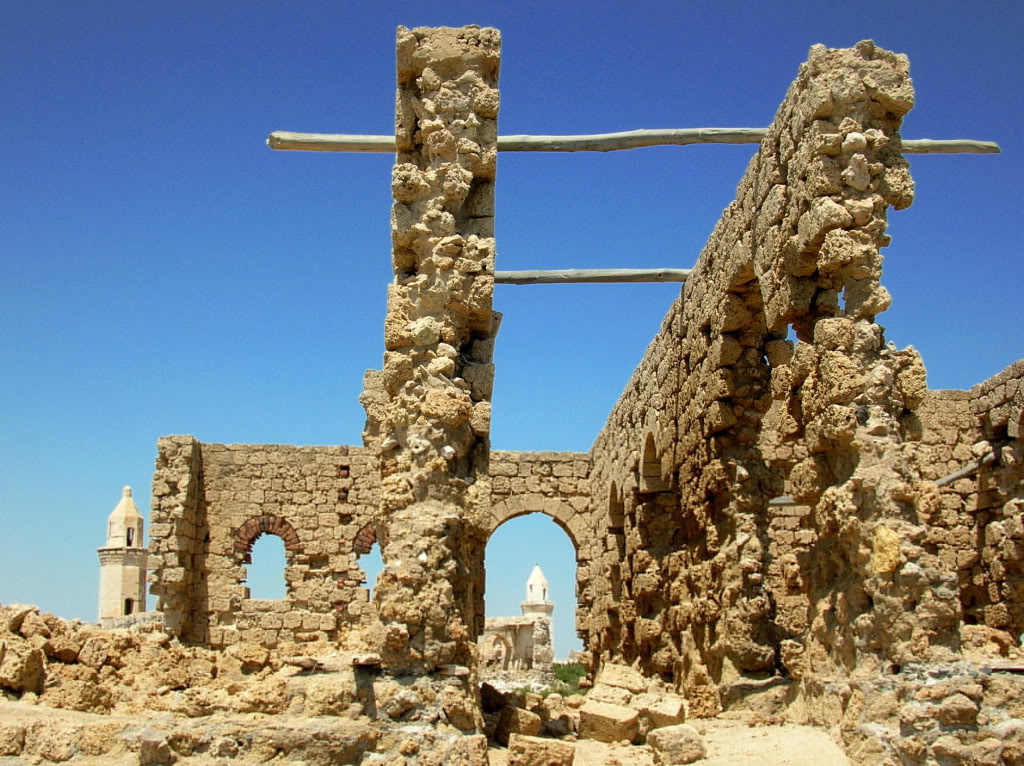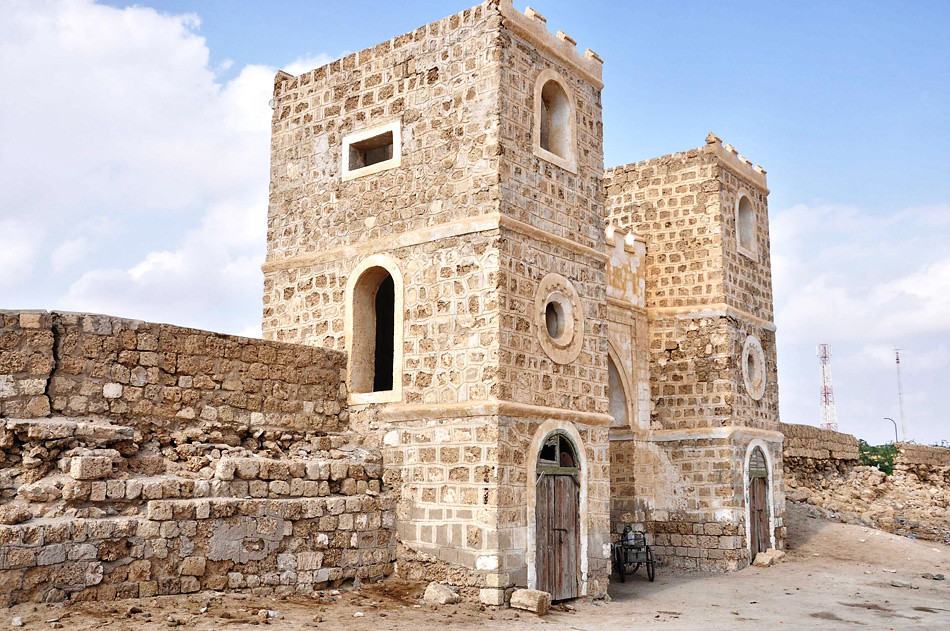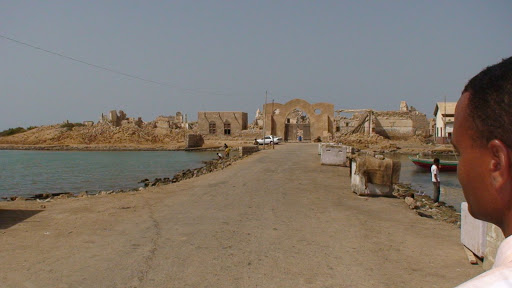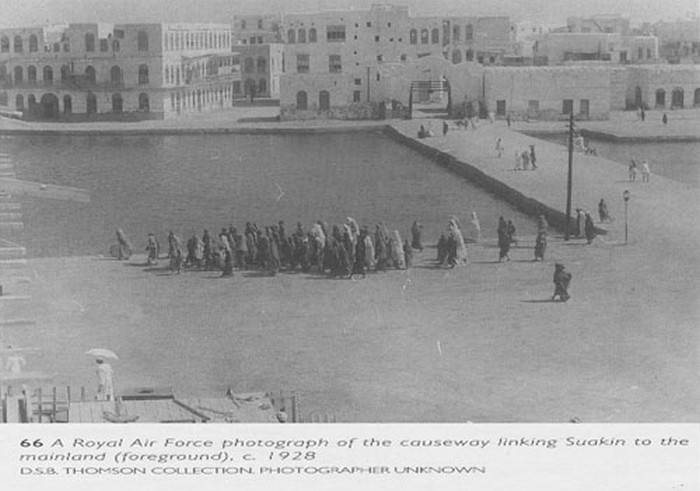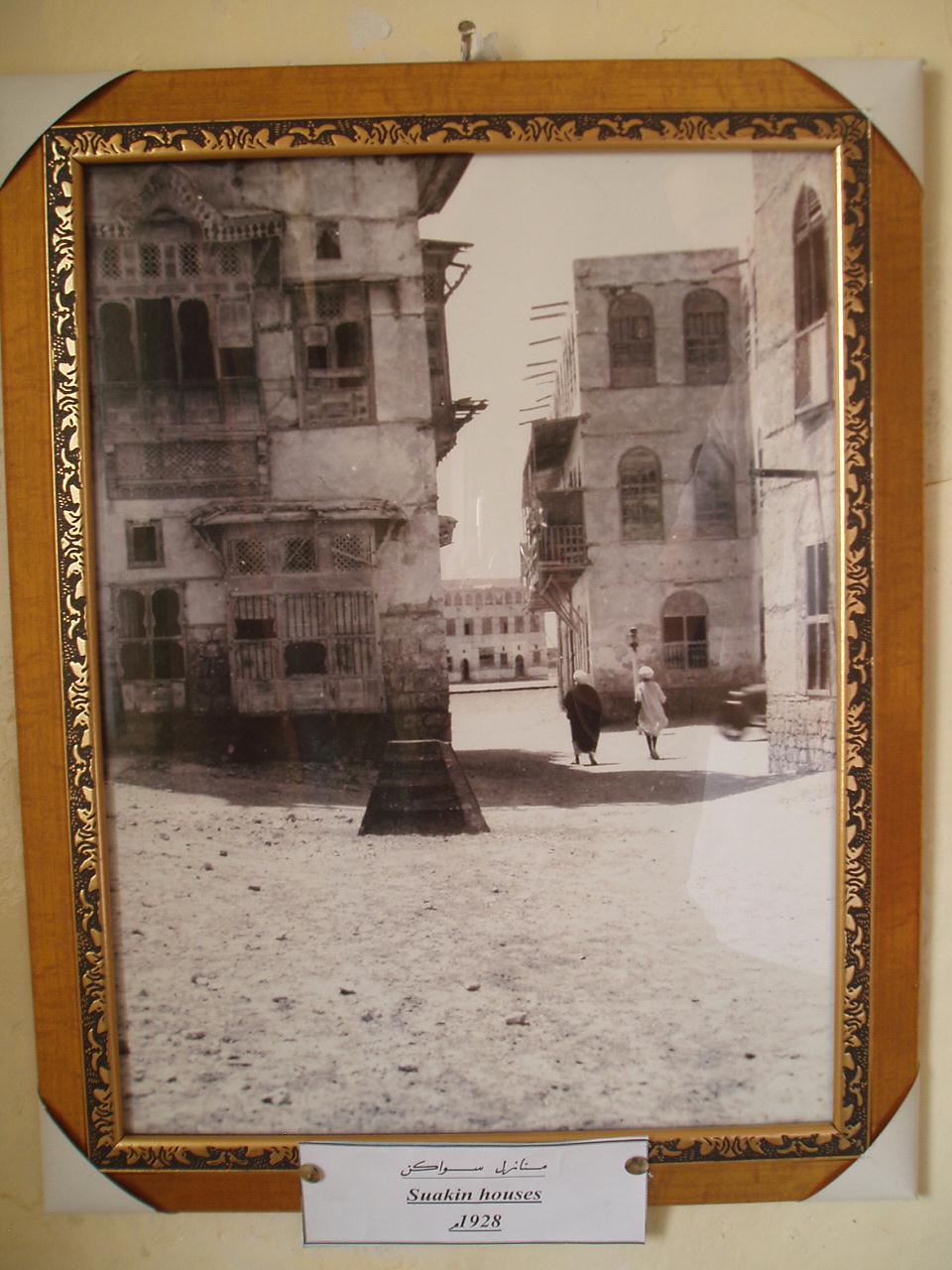Post by justcallmejari on Oct 21, 2013 10:55:33 GMT -5
Sawakin
Suakin or Sawakin (Arabic: سواكن Sawákin) is a port in
north-eastern Sudan, on the west coast of the Red Sea. In 1983 it had a
population of 18,030 and the 2009 estimate is 43, 337. It was formerly
the region's chief port, but is now secondary to Port Sudan, about 30
miles north. The old city built of coral is in ruins. Ferries run daily
from Suakin to Jeddah in Saudi Arabia.

Etymology
Sawakin (سواكن) is Arabic, meaning "dwellers" or "stillnesses." One legend connects it with the legends about King Solomon and the djinn, suggesting that when he banished them, Suakin was the place they were sent to (making the town's name a fanciful plural for sijn, prison.)
The Beja name for Suakin was U Suk, possibly from the Arabic word suq, meaning market. In Beja, the locative case for this is isukib, whence Suakin might have derived.
History:
Ancient
Suakin was likely Ptolemy's
Port of Good Hope, Limen Evangelis, which is similarly described as
lying on a circular island at the end of a long inlet. Under the Ptolemies and Romans, though, the Red Sea's major port was Berenice to the north. The growth of the Muslim caliphate then shifted trade first to the Hijaz and then the Persian Gulf.
Medieval
The collapse of the Abbasids and growth of Fatimid Egypt changed this and al-Qusayr and Aydhab became important emporia, trading with India and ferrying African pilgrims to Mecca.
Suakin was first mentioned by name in the 10th century by al-Hamdani,
who says it was already an ancient town. At that time, Suakin was a
small Beja settlement, but it began to expand after the abandonment of the port of Bari to its south. The Crusades and Mongol invasions drove more trade into the region: there are a number of references to Venetian merchants residing at Suakin and Massawa as early as the 14th century.
One of Suakin's rulers, Ala al-Din al-Asba'ani, angered the Mamluk sultan Baybars by seizing the goods of merchants who died at sea nearby. In 1264, the governor of Qus and his general Ikhmin Ala al-Din attacked with the support of Aydhab. Al-Asba'ani was forced to flee the city. It was possibly in retaliation for this that King David of Nubia attacked Aydhab and Aswan
a few years later. The continuing enmity between the two towns is
testified to by reports that after the destruction of Aydhab by Sultan Barsbay in 1426, the refugees who fled to Suakin instead of Dongola were all slaughtered.
Like the Nubians and Ethiopians, the Beja were originally Christian. Despite the town's formal submission to the Mamluks in 1317, O. G. S. Crawford believed that the city remained a center of Christianity into the 13th century. Muslim immigrants such as the Banu Kanz gradually transformed this: ibn Battuta
records that in 1332 there was a Muslim "sultan" of Suakin, al-Sharif
Zaid ibn-Abi Numayy ibn-'Ajlan, who was the son of a Meccan sharif. Following the region's inheritance laws, he had inherited the local leadership from his Bejan maternal uncles.
Ottoman & Colonial Rule
In 1517, the Ottoman sultanSelim I conquered the port, and after a brief occupation by the Funj, it was thereafter the residence of the pasha of the Ottoman province of Habeş, which included Arqiqo and Massawa in present-day Eritrea. Under the Turks, Suakin declined sharply, as the Portuguese explorers
discovered and perfected the sea route around Africa: when the Ottomans
were unable to stop this trade, the local merchants began to abandon
the town.
Some trade was kept up with the Sultanate of Sennar, but by the 18th and 19th centuries, the Swiss traveler Jean Louis Burckhardt found two-thirds of the homes in ruin. The KhediveIsma'il
received Suakin from the Ottomans in 1865 and attempted to revitalize
it: Egypt built new houses, mills, mosques, hospitals, even a church for
immigrant Copts. But the failed Egyptian-Ethiopian War led to the Mahdi revolt against British colonial rule. Lord Kitchner used Suakin as his headquarters and survived a lengthy siege there, but after the Mahdi's defeat, the British preferred to develop the new Port Sudan
rather than engage in the extensive rebuilding and expansion that would
be necessary to make Suakin comparable. By 1922, the last of the
companies had left.
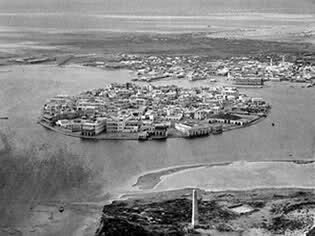
Suakin or Sawakin (Arabic: سواكن Sawákin) is a port in
north-eastern Sudan, on the west coast of the Red Sea. In 1983 it had a
population of 18,030 and the 2009 estimate is 43, 337. It was formerly
the region's chief port, but is now secondary to Port Sudan, about 30
miles north. The old city built of coral is in ruins. Ferries run daily
from Suakin to Jeddah in Saudi Arabia.

Etymology
Sawakin (سواكن) is Arabic, meaning "dwellers" or "stillnesses." One legend connects it with the legends about King Solomon and the djinn, suggesting that when he banished them, Suakin was the place they were sent to (making the town's name a fanciful plural for sijn, prison.)
The Beja name for Suakin was U Suk, possibly from the Arabic word suq, meaning market. In Beja, the locative case for this is isukib, whence Suakin might have derived.
History:
Ancient
Suakin was likely Ptolemy's
Port of Good Hope, Limen Evangelis, which is similarly described as
lying on a circular island at the end of a long inlet. Under the Ptolemies and Romans, though, the Red Sea's major port was Berenice to the north. The growth of the Muslim caliphate then shifted trade first to the Hijaz and then the Persian Gulf.
Medieval
The collapse of the Abbasids and growth of Fatimid Egypt changed this and al-Qusayr and Aydhab became important emporia, trading with India and ferrying African pilgrims to Mecca.
Suakin was first mentioned by name in the 10th century by al-Hamdani,
who says it was already an ancient town. At that time, Suakin was a
small Beja settlement, but it began to expand after the abandonment of the port of Bari to its south. The Crusades and Mongol invasions drove more trade into the region: there are a number of references to Venetian merchants residing at Suakin and Massawa as early as the 14th century.
One of Suakin's rulers, Ala al-Din al-Asba'ani, angered the Mamluk sultan Baybars by seizing the goods of merchants who died at sea nearby. In 1264, the governor of Qus and his general Ikhmin Ala al-Din attacked with the support of Aydhab. Al-Asba'ani was forced to flee the city. It was possibly in retaliation for this that King David of Nubia attacked Aydhab and Aswan
a few years later. The continuing enmity between the two towns is
testified to by reports that after the destruction of Aydhab by Sultan Barsbay in 1426, the refugees who fled to Suakin instead of Dongola were all slaughtered.
Like the Nubians and Ethiopians, the Beja were originally Christian. Despite the town's formal submission to the Mamluks in 1317, O. G. S. Crawford believed that the city remained a center of Christianity into the 13th century. Muslim immigrants such as the Banu Kanz gradually transformed this: ibn Battuta
records that in 1332 there was a Muslim "sultan" of Suakin, al-Sharif
Zaid ibn-Abi Numayy ibn-'Ajlan, who was the son of a Meccan sharif. Following the region's inheritance laws, he had inherited the local leadership from his Bejan maternal uncles.
Ottoman & Colonial Rule
In 1517, the Ottoman sultanSelim I conquered the port, and after a brief occupation by the Funj, it was thereafter the residence of the pasha of the Ottoman province of Habeş, which included Arqiqo and Massawa in present-day Eritrea. Under the Turks, Suakin declined sharply, as the Portuguese explorers
discovered and perfected the sea route around Africa: when the Ottomans
were unable to stop this trade, the local merchants began to abandon
the town.
Some trade was kept up with the Sultanate of Sennar, but by the 18th and 19th centuries, the Swiss traveler Jean Louis Burckhardt found two-thirds of the homes in ruin. The KhediveIsma'il
received Suakin from the Ottomans in 1865 and attempted to revitalize
it: Egypt built new houses, mills, mosques, hospitals, even a church for
immigrant Copts. But the failed Egyptian-Ethiopian War led to the Mahdi revolt against British colonial rule. Lord Kitchner used Suakin as his headquarters and survived a lengthy siege there, but after the Mahdi's defeat, the British preferred to develop the new Port Sudan
rather than engage in the extensive rebuilding and expansion that would
be necessary to make Suakin comparable. By 1922, the last of the
companies had left.



